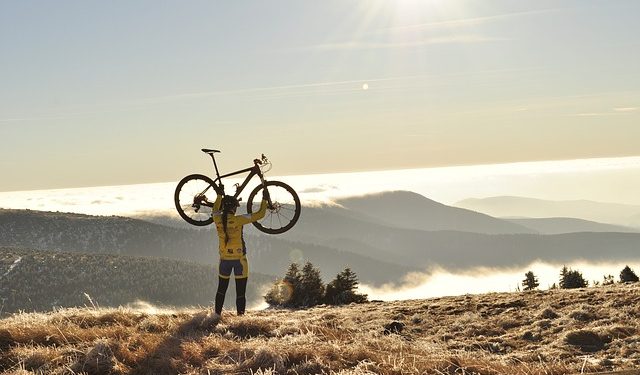Considering the crazy amount of fun, fitness, and camaraderie that comes from mountain biking, you are probably excited to set your foot on the trail. This guide will help you dive into the trails even if you have zero knowledge about mountain biking.
Getting the right bike
Before you start mountain biking, it is essential to get your hands on a bike suited to your needs. This means that there are a couple of factors to consider.
Firstly, consider your budget. The full suspension bikes have a higher price range compared to the hardtail bikes. Higher-end bicycles will have higher-end price tags. The bike manufacturers will provide different tiered levels from high-end specifications to low-end specifications depending on the budget you have.
Secondly, the type of terrain you choose will determine the type of bike you should get. For more rugged terrain, you would require a full-suspension bike that gives you an increased amount of traction and control. For more information on the best mountain bike and headgear, head over to Thrill Appeal
Walking on the terrain
As a beginner to mountain biking, it is recommended that you talk a stroll along the path that you’ve selected in order to have a look beforehand on the obstacles, i.e. rocks, turns.
Preparing for the ride
There are some safety measures one should ensure while setting on the bike off-road. These include a helmet that fits perfectly, gloves, shin guards, and arm braces. Putting on these safety gear will ensure a safer adventure and keep major injuries away.
Starting slow
Once you have a good bike and proper safety gear, it’s time to get on the track! Find an unpaved yet leveled ground and bike along the trail. It’s important to start slow by adjusting the seat and handlebars according to your desired level. This way you’ll be able to understand the dynamics of your bike before stepping on the harder, more rugged terrains.
Positioning your eye level
Keep your eyes on the way you want to go, not on the surroundings. It’s easy to get distracted yet extremely crucial to look ahead in order to keep an eye out for low hanging branches, rocks or any other obstacles that may come in the way.
Uphills and Downhills
Going uphill requires a different technique and posture compared to going downhill. Up hilling requires you to lean forward and keep your butt on the seat. Pedal without standing as it’ll ensure that you keep your balance. On the other hand, going downhill will require you to stand and pedal. This will give you the control and view of the obstacles ahead.
Shifting gears
Different terrains require different speed levels. Shifting gears will make the pedaling require more or less pressure. Therefore, it is crucial to shift gears before the need arises, i.e. before going uphill.
Final Thoughts
We hope this guide may have proved beneficial for you to understand the basics of mountain biking. However, mountain biking is a difficult task and may require professional guidance. Reach out to your nearest biking clubs to master mountain biking. PS they may also have knowledge about the trails in your vicinity, i.e. fire roads, parks (brownie points, right?)





